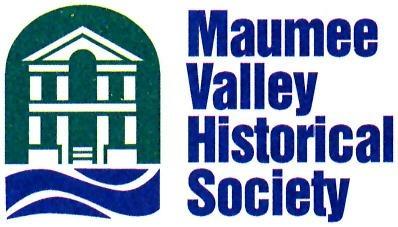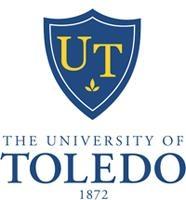Toledo's Attic has been a collaborative effort since 1995, which has significantly contributed to the diverse resources available through this project. The original project sponsors have included the following:
Maumee Valley Historical Society
Home of the Maumee Valley Historical Society, the Wolcott House Museum Complex takes visitors back to the early 19th century and gives you a peek at what pioneer life was like in the Maumee Valley.
The roots of the Maumee Valley Historical Society go back to 1864 with the formation of the Maumee Valley Pioneer Association. The founding members were early settlers of Northwest Ohio, who came together to protect and preserve the historic artifacts of the Maumee Valley as well as document information about themselves for future generations.
Mr. Peter Navarre was the first president of the Society and served until his death in 1873. Mr. Horatio Conant served as Vice-President. The first meeting was held in Toledo on February 22, 1865, with Mr. Morrison R. Waite of Maumee City, Ohio, as the guest speaker.
In 1918, the Society became known as the Historical Society of Northwest Ohio. The object of the Society was to:
- Acquire books, printed papers, and manuscripts
- Encourage writing of books and papers
- Deliver lectures and addresses on subjects of history
- To collect and arrange objects of historical interest and provide for their preservation and exhibition
- To provide a museum to house these collections
The purpose of the Historical Society broadened in the late 1950s when its dream of operating a museum became a reality. In 1957, Ms. Rilla Hull, the last direct descendant of James and Mary Wolcott, passed away and left her ancestral home to St. Paul’s Episcopal Church of Maumee. The Church sold the estate to the City of Maumee, who now leases the property to the Maumee Valley Historical Society.
Toledo Lucas County Public Library
The Toledo Lucas County Public Library supports and enhances a better quality of life for all residents of Lucas County. This is achieved by offering open and equitable access to information and services in a variety of formats and locations by providing: Focused resources and services that meet the needs of young children, adults and individual learners; Popular materials at levels proportional to demands; and Reference services, including specialized resources and services for economic development and local history.
The Local History and Genealogy Department of the Toledo Lucas County Public Library serves as the premier resource for uncovering the mysteries of Northwest Ohio. Whether filling in branches on your family tree or exploring the origins of the region, the information can be found here. Visitors can mine the past using state-of-the-art technology from today in an optimum environment for research and discovery. Located on the third floor of Main Library, 325 Michigan Street, the Local History Department is open Monday through Thursday from 9 a.m. to 9 p.m., Friday and Saturday from 9 a.m. to 5:30 p.m., and Sunday during the school year from 1 to 5:30 p.m. For more information, call 419.259.5233.
Blade Rare Book Room:
Thanks to generous community support, Library personnel who appreciate and understand the importance of a rare book collection, and the tremendous contributions of the Blade Foundation, Main Library is fortunate to be home to the Blade Rare Book Room - a climate-controlled room that is home to rare, precious, and fragile materials.
The Toledo Lucas County Public Library has acquired an unparalleled collection of rare and beautiful books, including 18th, 19th, and 20th Century illustrated books, Native American captivity narratives, early Ohio imprints, and Ohio and Northwest Territory history. Also included in the collection are the book arts, architecture, and early books on glass and glass making. In addition, the Reading Room houses a large collection of reference materials including bibliographies, auction catalogs, books on printing, binding, and paper making. Book collectors will also find books and periodicals on the history of book collecting and book values. The value, condition, and format of the materials housed in The Blade Rare Book Room requires that certain security procedures be followed when using the collection. Use of the material may require an appointment in advance. Special displays and exhibits are planned on a regular basis.
Ward M. Canaday Center for Special Collections
The main source of the material featured in Toledo's Attic is the Ward M. Canaday Center for Special Collections at the University of Toledo Libraries.
The Canaday Center’s rare book collection is focused on several areas: Southern writers such as William Faulkner and Eudora Welty; Ezra Pound, T. S. Eliot, and the Imagist poets; African-American literature; Henry David Thoreau; the history of books and fine printing; William Dean Howells; Leigh Hunt; and a collection on the stock market and financial speculation. In addition, the Center has a large collection of books published in the 19th and early 20th century on women’s social and literary history.
The Canaday Center collects, preserves, and makes available historical records of persons and organizations important to the history of Toledo and Northwest Ohio. Collections include records and personal papers of political figures, civic leaders, labor unions, social service agencies, and Toledo corporations. A detailed guide to the Manuscripts Collection is available.
The third component of the Canaday Center is the University Archives. The University of Toledo Archives serves as the institutional memory of the university. By collecting, preserving, and making available the historical records that document the university from its founding in 1872 to the present day, the archives serves students, faculty, staff, alumni, administrators, and community members. Collections include office files, personal papers of UT faculty members, publications of the university, files on student organizations, photographs, and theses and dissertations by UT graduate students. Most of the collections are available to researchers under the provisions of Ohio’s public record laws.
The Canaday Center, located on the fifth floor of Carlson Library, houses the library’s rare books, manuscript collections, and the University of Toledo’s archives. Because of the rarity and uniqueness of the collections, the materials of the Canaday Center do not circulate. Researchers wishing to use the collections must register, use the materials in the Center’s supervised reading room, and agree to follow rules for using the collections. The collections are open to the general public as well as University of Toledo faculty and students.
WGTE Public Media

For more than 50 years, WGTE has taken pride in its role as community historian and storyteller, producing exceptional local programming through FM 91 and WGTE TV 30. Through our Educational Resource Center and Early Learning and Outreach Department, we provide educational and training resources for students and teachers in the region. WGTE TV coverage includes 26 counties in Ohio and Michigan, and is carried by 95 cable companies in the region. FM 91 is broadcast in a large coverage area that includes 26 counties in Northwest and West Central Ohio and Southeast Michigan.



